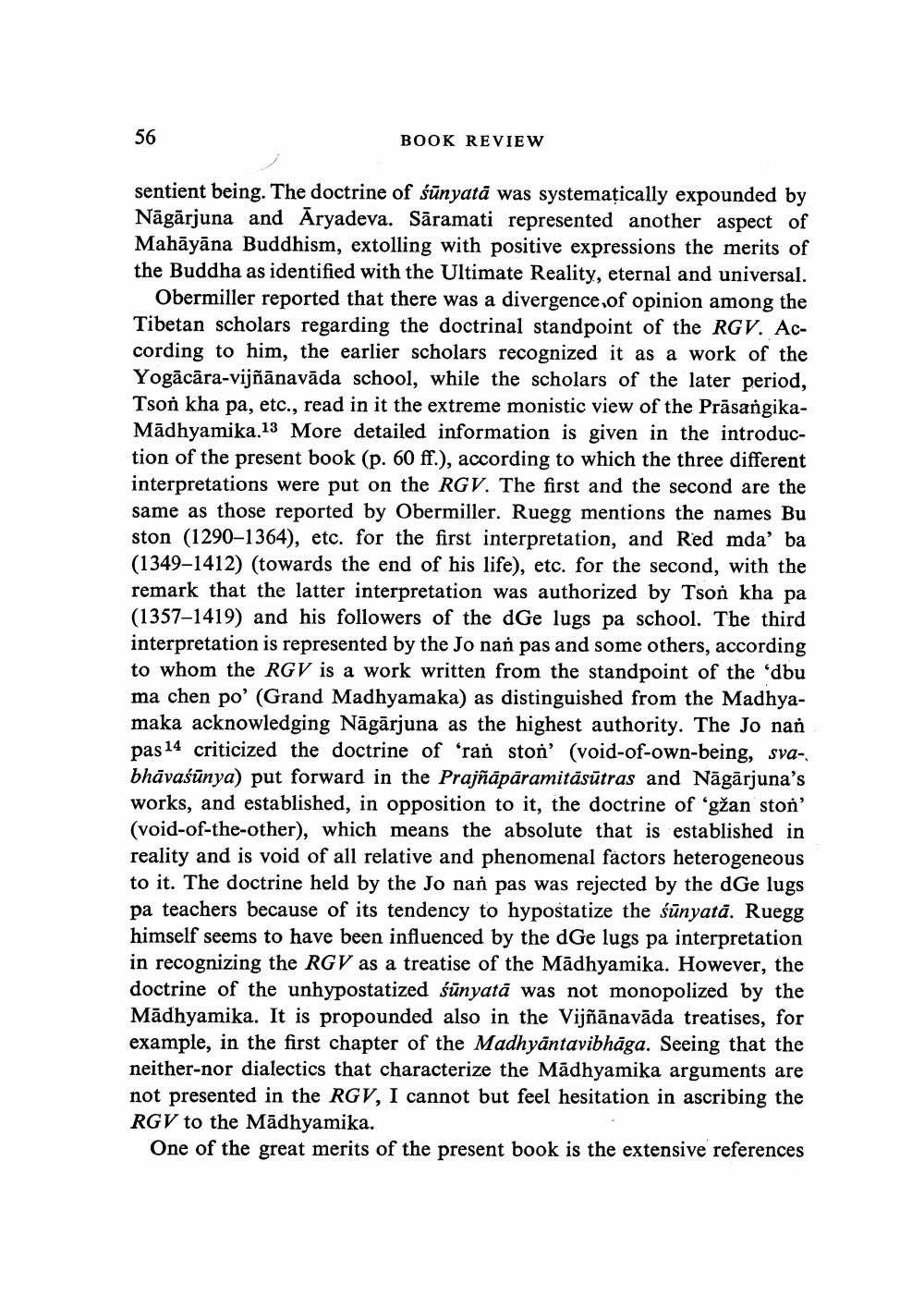________________ 56 BOOK REVIEW sentient being. The doctrine of sunyata was systematically expounded by Nagarjuna and Aryadeva. Saramati represented another aspect of Mahayana Buddhism, extolling with positive expressions the merits of the Buddha as identified with the Ultimate Reality, eternal and universal. Obermiller reported that there was a divergence of opinion among the Tibetan scholars regarding the doctrinal standpoint of the RGV. According to him, the earlier scholars recognized it as a work of the Yogacara-vijnanavada school, while the scholars of the later period, Tson kha pa, etc., read in it the extreme monistic view of the PrasangikaMadhyamika.13 More detailed information is given in the introduction of the present book (p. 60 ff.), according to which the three different interpretations were put on the RGV. The first and the second are the same as those reported by Obermiller. Ruegg mentions the names Bu ston (1290-1364), etc. for the first interpretation, and Red mda' ba (1349-1412) (towards the end of his life), etc. for the second, with the remark that the latter interpretation was authorized by Tson kha pa (1357-1419) and his followers of the dGe lugs pa school. The third interpretation is represented by the Jo nan pas and some others, according to whom the RGV is a work written from the standpoint of the 'dbu ma chen po' (Grand Madhyamaka) as distinguished from the Madhyamaka acknowledging Nagarjuna as the highest authority. The Jo nan pas 14 criticized the doctrine of 'ran ston' (void-of-own-being, sva-, bhavasunya) put forward in the Prajnaparamitasutras and Nagarjuna's works, and established, in opposition to it, the doctrine of 'gzan ston' (void-of-the-other), which means the absolute that is established in reality and is void of all relative and phenomenal factors heterogeneous to it. The doctrine held by the Jo nan pas was rejected by the dGe lugs pa teachers because of its tendency to hypostatize the sunyata. Ruegg himself seems to have been influenced by the dGe lugs pa interpretation in recognizing the RGV as a treatise of the Madhyamika. However, the doctrine of the unhypostatized sunyata was not monopolized by the Madhyamika. It is propounded also in the Vijnanavada treatises, for example, in the first chapter of the Madhyantavibhaga. Seeing that the neither-nor dialectics that characterize the Madhyamika arguments are not presented in the RGV, I cannot but feel hesitation in ascribing the RGV to the Madhyamika. One of the great merits of the present book is the extensive references




